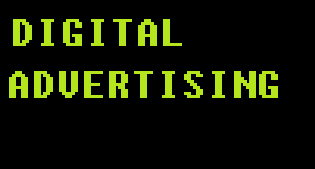Advertising vs. Marketing: Main Differences and Similarities

If you are a decision-maker at a brand, then you're probably familiar with the advertising vs marketing debate.
For small businesses and solopreneurs, marketing might be handled by the business owner, along with all the other tasks associated with operating a brand. A large corporation will typically have an entire marketing department dedicated to this aspect of the business.
Marketing and advertising terms are often used interchangeably. This has created some confusion about what each of them means and if they truly are the same thing. These words are certainly related, and both need to be a part of any business plan, but there are plenty of differences that should be highlighted.
Although this information will not shatter your world, it will be helpful as you craft marketing strategies and choose advertising campaigns for your brand.
Advertising vs Marketing
The easiest way to describe the advertising-marketing relationship is to say that advertising is a category that falls under the broader marketing umbrella.
Generally, marketing efforts are described as practices that help make a brand and its products compelling to audiences. Advertising, on the other hand, describes the specific tactics used to promote the product or brand directly to consumers.
If the term marketing is represented by a large circle, advertising is a smaller circle within the larger one. Let's get into some of the specifics of each to highlight the key differences.
Marketing Strategy Examples
Since the marketing process encompasses multiple practices in addition to advertising, it makes more sense to look at some examples of marketing strategies that your business may implement.
Market Research

Market research is a practice to understand better the target audience and the competition within a specific industry. Collecting data about the market will help the company understand consumer behavior, the strength of direct competitors, and how difficult it will be to earn a share of the target market.
Market research should be one of the first steps taken when crafting a marketing campaign.
Branding

Marketing also involves the relationship that the brand has with the public, as well as its persona. How the business interacts with people and how they perceive the brand all come back to the branding efforts of that organization. Public relations is a big piece of this puzzle and is one of the most effective marketing initiatives for establishing a trustworthy brand.
One popular strategy for increasing brand awareness is investing in branded merchandise to give away.
Customer Relationship Management

Managing customer relationships is a critical piece of your marketing methods. After all, marketing is not just about attracting customers to make purchases. It is also about maintaining those relationships positively.
Relationship marketing represents a company's efforts to build long-term connections with customers and develop brand loyalty. Potential customers become existing customers which can turn into repeat customers with the right relationship marketing strategies.
This crucial element of maintaining existing customers can be a source of tremendous growth for the brand.
Digital Marketing

Digital marketing refers to any methods that require a device to interact with. This includes online media like social media platforms as well as TV and radio. While many of the efforts in this category would be considered advertising, some fall only under the category of marketing.
Social Media Marketing

For example, social media channels can be used to improve a customer's relationship with the brand. Organic posts, comments, likes, and shares can all contribute to building an online community that improves the customer perception of the brand without directly advertising products.
This type of social media marketing strategy can lead to greater awareness among target audiences while attracting more customers. It also can go hand-in-hand with influencer marketing which relies on well-known personalities to market a brand.
Email Marketing

Another common ingredient in the marketing mix is an email campaign. While emails can be used for both marketing and advertising, some iterations are not considered direct promotion.
For example, a monthly e-newsletter that informs readers about industry trends is simply a demonstration of expertise and authority rather than a product promotion. These emails are selling the reputation of the brand itself, demonstrating deep knowledge of what the audience cares about.
Content Marketing
The same concept that applies to email marketing can also apply to content marketing. Some content may be focused on advertising and selling a product or service. But content can also be used to inform or entertain.
Content can take the form of blogs, landing pages, videos, social media posts, and more. A marketing team with strong content creators can be very effective at connecting with new customers.
Advertising Examples
This concept is a smaller category within the overall subject of marketing. While implementing marketing efforts can be a very involved process that covers various marketing activities, advertising strategies are a little more focused.
Digital Advertising

Above, the concept of digital marketing was mentioned. Digital advertising is similar but refers to the specific tactic, advertising message, and product promotion that is used for brand communication with customers online. Online channels like social media and emails fall under this category, as well as more traditional advertising means like television and radio.
Examples of digital advertising efforts include promotional emails, social media ads, TV commercials, and radio ads.
Native Advertising

Native advertising often takes a digital form. For example, mobile advertising may include ads that pop up on social media channels that match the look and feel of the platform, such as video ads. Another example of a native advertisement is a video ad on YouTube.
Print Advertising

A more physical medium may be used for your company's advertising campaign. Print advertising includes media like billboards, brochures, direct mail, posters, magazine ads, display advertising, business cards, and signs. Many advertising teams use a blend of digital and print ads to reach a broad audience with messages that promote the company's products.
Event Advertising

Showing up in the community is another effective strategy for businesses trying to promote their services. This is known as event advertising when a company makes a public appearance either at a community event or by hosting one themselves.
By giving away swag or offering products and services at the event, they can make more customers aware of the company.
Marketing Agencies vs Advertising Agencies

If your company pays for another organization to help with marketing or advertising, it is important to understand the differences in what these businesses are offering.
A marketing agency may handle a broader range of services for your messaging needs, including marketing strategy, social media marketing, search engine optimization for ranking in search engines, public relations, brand reputation efforts, and after-sales support.
Meanwhile, an advertising agency may offer a more limited scope of services, but with more focus. They can help with advertising strategies, paid media, paid ads, owned media messaging, and traditional advertising tactics.
What Advertising and Marketing Strategies Will Benefit You?

Now that you understand the differences between marketing and advertising, it should be a little easier to determine where your greatest need is as an organization. If you want to focus on paid media or promotional specifics, then advertising covers these subjects.
However, if you are looking into a larger marketing plan to maximize sales and improve the brand's relationship with customers, then a focus on marketing makes more sense.
Find the Right Advertising and Marketing Mix
In all likelihood, your company needs investment in both. The front end of the process involves laying out a general marketing campaign with audience research and bringing the marketing team together with the marketing manager to craft a strategy. Once the time for implementation comes around, that is when you get into the advertising side of things, like a paid ad campaign or creating the marketing materials for product promotion.
Marketing and advertising needs will vary from business to business, so there is no recipe for success to follow for the perfect marketing plan. However, if you're looking for affordable advertising ideas, we've written up a guide for that.
Every individual in your marketing department and even some in other areas should understand the distinctions between marketing and advertising, from the brand managers to the content creators to the sales managers.
Understanding the marketing and advertising differences can guide how you use your marketing investments to the greatest effect, generating growth for the brand and fostering loyal customers.









